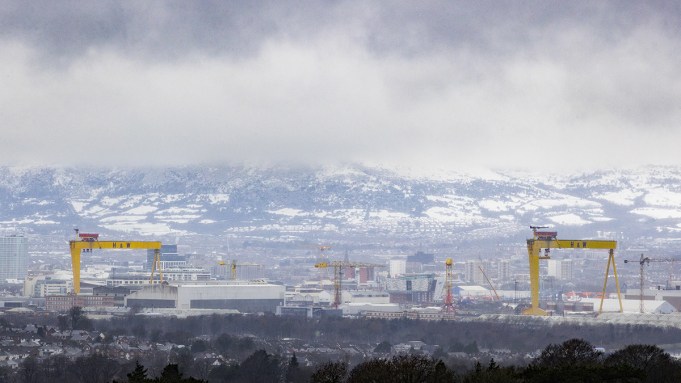Just like more than a century ago, the shipyard that built is sinking.
Harland & Wolff, the British holding company for the shipyard that constructed the Titanic, has gone into administration, a process similar to bankruptcy proceedings in the United States, The New York Times on Monday. The company has been dealing with financial hardship for years, and those struggles have only gotten worse in recent months.
“The group faces a very challenging time given the overhang of significant historic losses and its failure to secure long-term financing,” Russell Downs, a restructuring expert and the interim executive chair of Harland & Wolff, said in a statement cited by the Times.
The company has been around for 163 years, building ships including the Titanic, the Olympic, and other notable ocean liners. But as the world has changed, Harland & Wolff has struggled to keep up, with The New York Times citing a failure to adapt to new technologies as one of the reasons for the company’s troubles. Back in 2019, it went into administration for the first time, but new owners saved it from an unsavory fate back then.
Now, Downs thinks that Harland & Wolff will be sold again and become a private company. (The company stopped trading on the London Stock Exchange in July, after it didn’t publicly share audited accounts on time. Executives will meet with shareholders later this week.) Those seeking to potentially buy some or all of the company include Navantia, a state-owned shipbuilder in Spain, and British defense company Babcock International. Both entities have expressed interest in Harland & Wolff’s Belfast shipyard, where the Titanic was built.
The administration announcement comes on the heels of the British government refusing to guarantee Harland & Wolff a $264 million loan earlier this summer, The New York Times wrote. While it’s still not looking to give the company any money, the British Department for Business and Trade told the newspaper that it was hoping to find a solution that would protect the 1,300 people currently employed by Harland & Wolff.
“We are clear that following a thorough review of the company’s financial situation at present, the market is best placed to address these challenges,” a department spokesperson told the Times. “Providing government funding would have meant a significant risk of losing taxpayer money.”
In the meantime, the company’s four shipyards will continue to operate. It’s unclear what will happen with a current contract to build three vessels for the Royal Navy, though.



